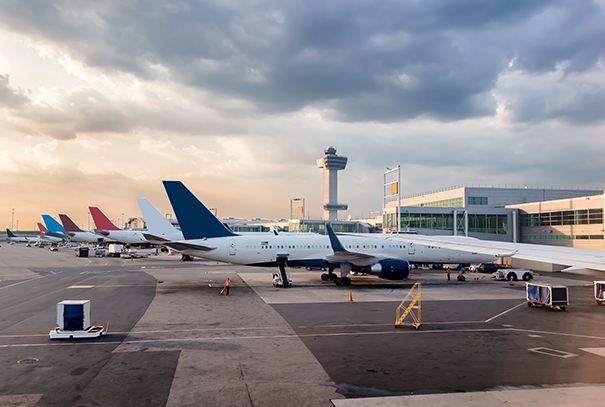
However, as we know, sadly the aviation industry has been affected with a massive impact to businesses and jobs and in turn this has inevitably provided a challenge to our insurance sector like none seen since 2001.
For aviation insurers the focus has been on the pandemic impact on their client base with the resulting dramatic change in flight numbers, passengers and ultimately the comparative exposure based premium equivalent therefore available to begin renewal discussions on.
For the reinsurance market, the challenge of how they can consider this reduced exposure has been relatively side-lined as a lesser problem when compared to the impact of two significant changes in the established loss reserves held for claims in relation to the B737 MAX event and Lion Air/Ethiopian Airlines losses.
The first loss reserve increase in March 2020 was not a surprise as in reality, the information surrounding the loss which continued to be publicly aired was highly unlikely ever to reduce estimates. In addition to this, the legal actions being pressed in America against Boeing were of great concern to insurers and reinsurers in view of previous experiences with substantial jury awards. However, the impact of the second loss reserve increase in October 2020, in both its timing and quantum, pressed reinsurers into a tight corner and resulted in significantly higher basic rate increases being attributed to the market at the 1 November (1/11) 2020 renewals.
Any Plane Talking readers who buy reinsurance coverage, especially Excess of Loss programmes, will know that rates began to increase in June 2019, the first time since 2009, as reinsurers began to see reserves established from the passenger and grounding liability limit claims on the Boeing policy. These increases were considerate to factors including a base rate movement, the relative involvement in the loss affected policies and then the overall exposure change to the portfolio, noting at this stage insured’s incomes were rising reflecting direct rate increases and capacity changes.
This certainly may have been less than welcomed by insurers, but it was relatively understood, it was proportionate and insurers who had no exposure to losses did not feel adversely treated, especially as the years from 2002 to 2018 had seen minimal losses recoverable. From a reinsurer view, they could see positive rate movement, some measure of payback element and with losses generally contained in the first reinsurance layer at reasonable rate on lines, there was a sense of calm as opposed to real concern.
However, reserve movements in March 2020 pushed the loss further upwards into areas of reinsurance programmes with single-digit rate on lines, where losses had not been seen since 2001. This certainly forced many of the major reinsurers, who run the majority of their accounts with minimal retro protection, into a degree of urgency to further increase rate size and pursue an additional element of loss payback. Most other reinsurers followed this action.
Subsequently, from April 2020 onwards, insurers saw a more significant increase in their overall reinsurance costs. Unfortunately, this coincided with the start of the COVID-19 pandemic, in which international and domestic air traffic dropped considerably and forecasts became gloomier for the remainder of 2020. While insurers reflected on their client’s requests for premium relief against their need to increase the base aviation market premium, reinsurers were nervously waiting for news on market rumours suggesting that the March Boeing reserves were set to increase.
Fast forward to October 2020, and news of significant increases to the Boeing reserves had leaked. This news pressed reinsurers into applying even greater levels of base rate increase on clean layers or programmes. Some reports suggest reserves reaching the top layer of programmes which are typically bought for clash coverage expectation and not a modelled single aircraft loss outside of the US.
This new demand on reinsurance pricing comes now as a major challenge to insurers who are trying to increase their own premium income while at the same time working with brokers, and their clients who are struggling to continue in business as travel remains severely restricted.
In looking at the most recent reinsurance renewals we do though still see that all have been renewed with ample capacity levels, which points to a different dynamic than the direct market has recently been experiencing with insurers withdrawing from the class entirely. This may seem counter intuitive as surely reinsurance capacity would reduce if reinsurers are seeing a magnitude of loss greater than anything seen since the WTC reserves (and in reality these two losses may end up being greater than the industry paid loss experienced with WTC).
Therefore, we can at least be thankful that the reinsurance capital deployed is clearly long-term in view with a strong experienced underwriting base that can explain the losses, and show a way forwards to their management, and this has so far, avoided any withdrawals.
However, the balancing act that the aviation market as a whole face means that direct insureds face the greatest economic survival challenge seen since those days in 2001. Insurers meanwhile face the resulting challenge of trying to increase the markets premium base in a measured way that keeps as many clients as possible alive.
And so, a challenge exists for reinsurers as they consider the 1 January 2021 (1/1) and 1 April 2021 (1/4) renewals. How do they establish understandable future loss pricing but help maintain their clients ability to continue to offer economic and exposure realistic pricing?
In the next edition of Plane Talking we hope to add more comments and thoughts around these renewals and future expectations for 2021!


